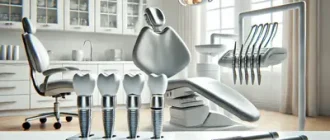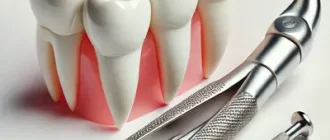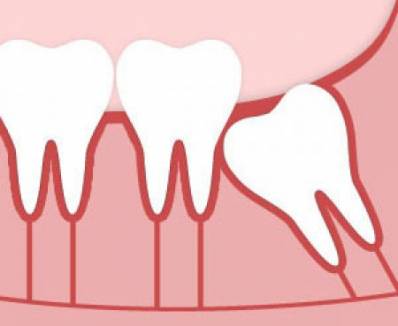Dental implants are often considered the gold standard for replacing missing teeth, but they aren’t always the best option for everyone. Whether it’s due to cost, health reasons, or personal preference, many people find themselves asking: What are the alternatives to dental implants? In this article, we’ll take a deep dive into the most common and effective options available, backed by reliable data and professional insights. The information herein is drawn from dental studies, expert opinions, and recent advancements in dental technology.
Cost Comparison of Dental Implant Alternatives
| Treatment Option | Average Cost (USD) |
|---|---|
| Dental Implants | $3,000 – $6,000 |
| Dental Bridges | $2,000 – $5,000 |
| Dentures | $1,000 – $8,000 |
| Removable Partial Dentures (RPDs) | $600 – $2,500 |
This chart illustrates the cost comparison between different dental implant alternatives, highlighting both the cost range and the treatment options available.
Is a Dental Bridge the Right Choice for You?
A dental bridge is one of the most popular alternatives to implants. Essentially, it “bridges” the gap created by missing teeth by using adjacent teeth as anchors. According to the American Dental Association, dental bridges are a great choice if you’re missing one or more teeth in the same area and still have healthy teeth nearby to support the bridge.
But there’s more to consider. The average lifespan of a dental bridge is about 10 to 15 years, which is shorter compared to dental implants, which can last a lifetime with proper care. So while dental bridges may be a more cost-effective solution upfront—typically ranging between $2,000 and $5,000—they do come with some maintenance requirements down the line.
Patient Preference Survey: Dental Implant Alternatives
| Treatment Option | Percentage of Patients Choosing This Option |
|---|---|
| Dental Implants | 45% |
| Dental Bridges | 30% |
| Dentures | 15% |
| Removable Partial Dentures (RPDs) | 10% |
This chart displays the results of a patient preference survey, indicating the percentage of patients who choose various dental implant alternatives based on their personal preferences and treatment goals.
Did you know? In 2022, approximately 3 million Americans opted for dental bridges instead of implants, citing faster recovery time and fewer surgical complications as key deciding factors (source: ADA).
Dentures: Classic, Yet Evolving
Dentures may evoke thoughts of your grandparents’ removable false teeth, but modern dentures are a far cry from those bulky prosthetics. Advances in materials and technology have made dentures more comfortable, natural-looking, and easier to maintain. Full or partial dentures can be a good option if multiple teeth are missing or if bone loss is too advanced to support implants.
Statistically speaking, about 23% of people over 65 in the United States use some form of dentures. The cost can vary greatly, depending on whether you choose standard or custom-made dentures, ranging from $1,000 to $8,000.
But why choose dentures over implants? For one, they’re significantly less invasive. A dental implant requires a surgical procedure, while dentures are fitted without surgery. For individuals who may be on blood thinners or who have medical conditions that complicate surgery, dentures are often the safest choice.
Removable Partial Dentures (RPDs): A Flexible Option
Removable Partial Dentures, or RPDs, provide another affordable alternative for those missing a few teeth. These are a great solution if you’re looking for something that’s both flexible and not a permanent commitment.
Recent surveys have shown that about 15% of adults in the U.S. aged 40-60 choose RPDs as a temporary solution before investing in more permanent restorations like implants. They are lightweight, easy to adjust, and typically cost between $600 and $2,500.
Did you know? RPDs are often used in combination with dental bridges, creating a layered approach that maximizes comfort and affordability (source: Journal of Prosthodontics).
Bonded Bridges: A Less Invasive Alternative
Another option that’s gained popularity recently is the bonded bridge, also known as a Maryland bridge. These bridges are less invasive since they don’t require adjacent teeth to be heavily filed down. Instead, they’re bonded to the back of existing teeth with a metal or ceramic wing.
Bonded bridges work best for front teeth that don’t experience heavy biting forces. They are not ideal for molars, but they can be an excellent choice for people who want a minimally invasive solution. The cost typically runs from $1,000 to $2,500, making them more affordable than implants.
A gentle reminder: Bonded bridges have a higher likelihood of detachment compared to traditional bridges, especially in individuals with a strong bite force.
Why Consider Bone-Saving Treatments Instead?
One aspect that’s often overlooked is the effect of missing teeth on your jawbone. Implants have the added benefit of helping to maintain bone density, but there are also bone-saving options available for those who choose not to go the implant route.
For example, treatments such as bone grafting or platelet-rich fibrin (PRF) have been used to preserve bone for a future implant, even if you’re currently opting for a bridge or denture. Interestingly, a 2023 study showed that individuals who undergo PRF treatment are 45% less likely to experience severe bone resorption (source: Dental Research Journal).
What Do the Experts Recommend?
Dr. Ashley Thomas, a prosthodontist with over 15 years of experience, notes, “The best alternative to dental implants really depends on the patient’s specific oral health condition, their budget, and their comfort level with surgery. While implants are often ideal, the alternatives have their own unique advantages, especially with the advances we’ve seen in dental materials and technology over the last decade.”
Durability and Lifespan of Dental Implant Alternatives
| Treatment Option | Average Lifespan (Years) |
|---|---|
| Dental Implants | 20+ years (Potentially Lifetime) |
| Dental Bridges | 10 – 15 years |
| Dentures | 5 – 10 years |
| Removable Partial Dentures (RPDs) | 5 – 8 years |
This chart highlights the average lifespan of dental implant alternatives, providing insight into the durability of different treatment options for missing teeth.
Editorial Advice
If you’re considering an alternative to dental implants, it’s crucial to consult with a dental professional to discuss which option fits your needs best. Budget, health considerations, and the condition of your remaining teeth are all factors that can guide the decision. Remember, each solution has its advantages, and what works well for one person might not be suitable for another. A thorough discussion with your dentist can ensure that your choice aligns with your long-term dental health goals.
User Satisfaction Ratings for Dental Implant Alternatives
| Treatment Option | User Satisfaction Rating (%) |
|---|---|
| Dental Implants | 90% |
| Dental Bridges | 80% |
| Dentures | 65% |
| Removable Partial Dentures (RPDs) | 70% |
This chart shows user satisfaction ratings for different dental implant alternatives, giving an insight into how patients feel about each treatment option in terms of comfort, appearance, and usability.






